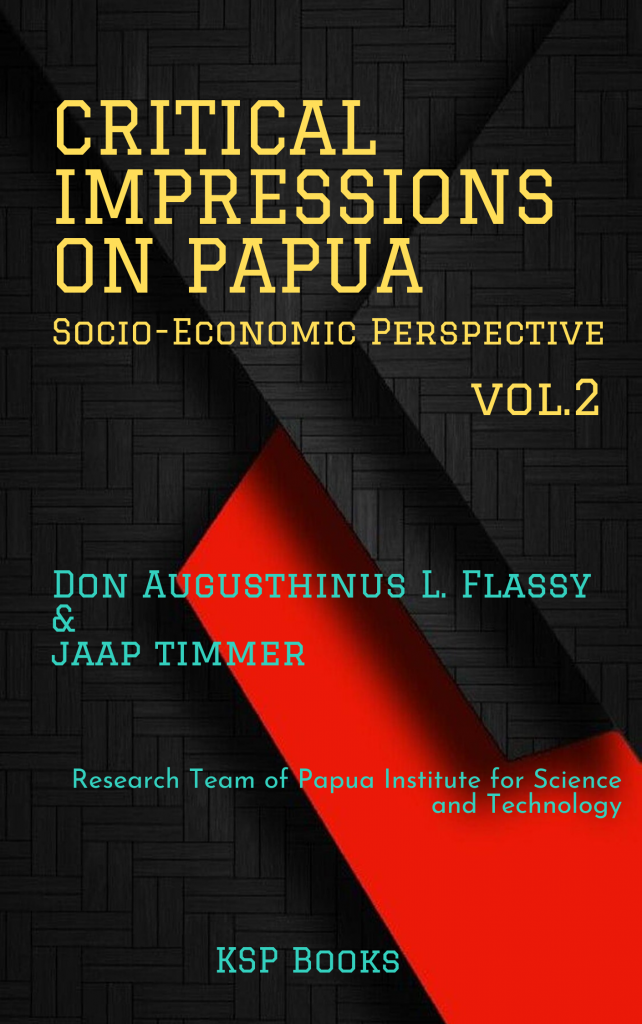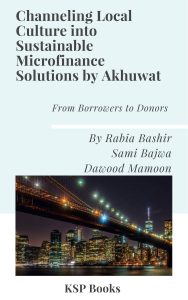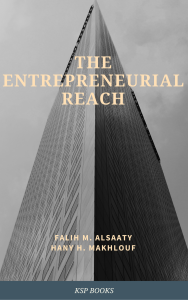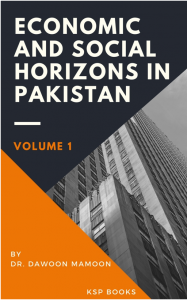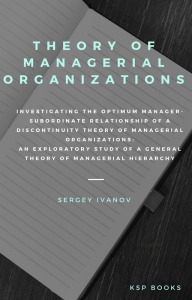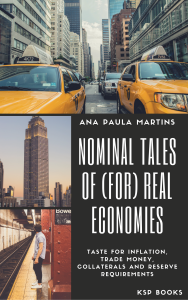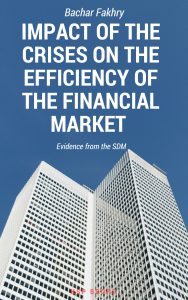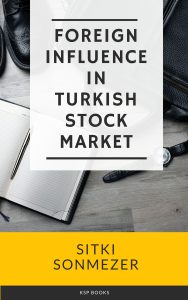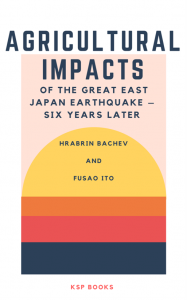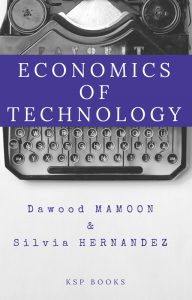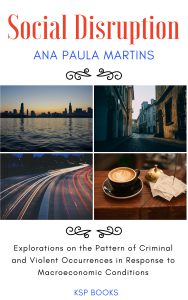Socio-Economic Perspective Vol.2
Synopsis
In particular, the volume contains three chapters:
I. Constitution Vis-A-Vis Constitution Indonesian 1945 Versus Papuan 1999
There is tolerance merger of Unity in Diversity versus solidarity merger of Togetherness in Diversity as poles of spanning the natural and engineering efforts are not natural to make or maintain existing fused together. Shown by the spirit of Indonesia’s 1945 Constitution versus Papua’s 1999 Constitution. This article titled “Constitution vis-à-vis Constitution: Indonesia 1945 versus Papua 1999” is intended to demonstrate the existence of each of the philosophical as well as the feasibility of correlation between the two as cause and effect in supporting the blare political action which is: “The Roadmap to the Revival of the Papuan Nation in West Papua: “A Peaceful Decision on the Restoration of the Self”. Affair have been taken place, namely through the Third Papua People’s Congress (Kongres Rakyat Papua Tiga/KRP-3), October 16-19, 2011, where the Nation of Papua has announced Unilateral Declaration of Independence of the Nation of West Papua/UDI-Papua and formation of The Federal Republic of West Papua/FRPB (Negara Republik Federal Papua Barat/ NRFPB) back to and continuing the Political Status of December 27nd 1949 to December 1st, 1961 (after RTC of The Hague to Political Manifesto of Papua). This is the status before Papua being occupied by Indonesia at change of International conspiracy. Thus, as well as to formulate the two basics: First, how to understand the presence of Papua-Melanesian inhabiting Land of Papua? Second, whether, People of Papua-Melanesian and Indonesia who inhabiting Land of Papua can beeing together according to the federalist order of Papua-Melanesian? This may also potentially for other basic formulation of discussion likely to reveal a back-rock (the unshakeeable basis) of each of the existence which is of Papua and of Indonesia as two different nations. The two nations are, as being correlated in the process of time and idealism. The appearance of actual and accurate Papua in Indonesia because of the synergies and mechanisms of critically adhesives of interest to tolerate incorporation of national unity or Multiple-wide but One, but also at the same time hard spanned cohesive because there is no solidarity which is Togetherness in Diversity because the nature of rejecting merger. There are many hidden presence but there are also some blatant. For this reason hidden structure theory needs to be implementing which convergent with other theories in the phenomenology-behaviourism methodology with the support of literature and empirical studies in practice (auto-ethnography). Thus it can be understood that there is tolerance merger of Unity in Diversity versus solidarity of Togetherness in Diversity is poles of spanning the natural and engineering efforts which are not natural to make or maintain existing fused together. The idealism reflected in each constitution of the two nations which are 1945 Constitution of Indonesia versus 1999 Constitution of Papua.
II. The threefold logic of Papua-Melanesia: Constitution-writing in the margins of the Indonesian nation-state
Clashes over the status of West Papua and the political future of the territory proliferated markedly following the end of Indonesia’s New Order regime in 1998. Amid a wide variety of demands for justice and independence, and a series of demonstrations, mass gatherings and prayers, only a few Papuans mused on how Papua could become a state and what would constitute its nature as being distinctly Papuan and/or Melanesian. One exception is the work put into the Constitution for West Papua entitled Basic Guidelines, State of West Papua, a document edited by Don A.L. Flassy, a bureaucrat, writer and thinker, with a preface by late Theys H. Eluay, then chairman of the Papuan Council. In this article I analyse this Constitution to show how a combination of Christianity and local customs, and a mimicry of elements of Indonesian nation building and symbols of the Indonesian nation-state are reshaped to oppose Indonesian nation-building agendas. The Constitution shows that when Papuans imagine an independent state, forms of vernacular legality play a central role. ‘The state’ has journeyed to Papua and encouraged faith in ‘the law,’ and Basic Guidelines is partly the effect of this growing vernacular legality. My analysis shows that it is essential to see how legal mobilisations and imaginations of the state articulate with other normative systems and practices – in particular Christianity and custom (adat) – and how they mutually allow for and invite strategies.
III. Seeking for recovering their identity: The Melanesian-Papua treading returning roadmap
The chapter describes 5 main areas, namely, (1)”Hidden Structure” that in the Social Meaning of Melanesian-Papua Cultural highlights Papuanistiecs and Melanesianology; (2) The Prestige and Power exposes the influence of the Big World Power to the problem of Papua; (3) Federalism in Indonesia reveal to the Melanesian-Papua in Land Papua as Special Specific Case versus unitary of The Republic of Indonesia; (4) Constitution vis-à-vis Constitution on constitutional philosophical correlation Indonesia constitution 1945 versus Papua constitution 1999; (5) Unilateral Declaration of Independence/UDI October 19, 2011, concerning Freedom-Melanesian Papuans in Land Papua as Nation and State. The background of this study is based on two main thoughts keys, namely: First, Meteray (2012: 268, 2013: 4) confirmed that, during the 17 years from 1945 to 1962, the process to Indonesian-sizing the Papuans are generally still in the stage of seeding while growth only in some areas of government and urban centres’. Awareness to be Indonesian-ness is yet to reach all areas of Papua. Meteray adding that the presence of Indonesian-sizing in past greatly influenced by the policies and the approach taken by both the Dutch and Indonesian government through the role of nationalists initiators of the period (2012: 264-267); Second; LIPI study in 2007 (Soewarsono, ed) are still questions to the Indonesian-sizing of the Papuans reinforce the view of Meteray stated that it is to Indonesian-sizing among the Papuans still weak (Meteray 2013: 1). Meteray concluded that, in fact, to understand the history of Papua will become a basic reference for the government seek and find out the right way and dignified in overcoming the issues of Papua, though on the other hand Aditjondro, 1999 clamming, the Government and Important People of Indonesia has curled the history of Papua which by the Papuans wanting to be straightened out, He calls this act as: “The dark history of Papua in Indonesian Historiography”. Thoughts of Meteray and Aditjondro strengthens the authors thought that the various problems occurred in Papua, especially the facts involves “M”/Merdeka (Freedom) Papua”. Referring to the failure of Indonesian-sizing of the Papuans, it appears that it is not necessary regrettable because in fact, they are different. Precisely when indecision of the President of Indonesia to the case of Papua is safe step into alternative measures of the Melanesian-Papua people themselves must be hacked through, UDI October 19, 2011. This research focuses on the study of literature and interviews with the method of Descriptive Analysis and Method of Structure Linkage to assemble the Hidden Structure and Correlation Studies to reflect the relationships between aspects on the basis of Motivation Theory, Theory of Social Change and Theory of Balance and Theory of Realist and related by make use of Hidden Structure as Grand Theory. The formulation of the problem is (1). How to understand the present of Melanesian-Papuans in Land Papua? (2). Whether existing of Papua as “trust territory” of the UN is still attracting the winning of Prestige and Power of “the Big Power of the World” to be back to discusses at the UN of a future in accordance with Article 74 and Article 78 of the UN Charter? (3). Whether, Melanesia-Papua and Indonesian in Papua can together according to the federalist order of Melanesian-Papua? (4). How is the condition of social customs and traditions of Indonesia and Papua can be met?
Contents
About Author
ISBN
978-605-7736-68-0
Date of Publication
December 15, 2019
File Size: 3567 KB
Length: xi + 196 pages
This work is licensed under a Creative Commons Attribution 4.0 International License.
